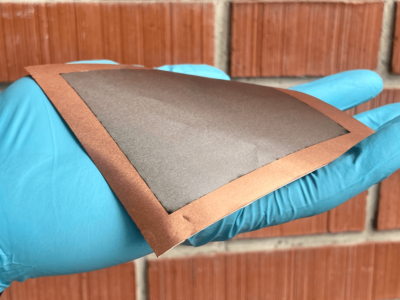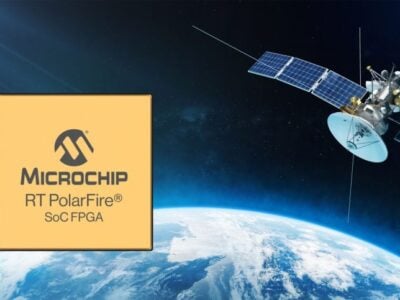
Imagination GPU adds ray tracing
The CXT GPU IP is the first implementation of the PowerVR Photon ray tracing architecture, which Imagination Technology started working on over a decade ago.
“Gaming experience is very important and this is the primary use case for the majority of GPUs we deploy said Andrew Girdler, product manager for graphics and automotive at Imagination. “Ray tracing has been part of our development since 2010 with the Plato GR6500 test chip and we have continued to hone and optimise that architecture with all the latest standards and that’s been an important part of our development over the last decade. This is the industry’s first level 4 ray tracing GPU, ahead of any desktop device today,” he said.
Ray tracing imitates how light behaves in the real world to create more realistic 3D scenes, but due to its computational complexity, ray tracing has only recently come to desktop PCs and gaming consoles. The Photon architecture brings this to mobile developers and gamers with full hardware acceleration.
The IMG CXT-48-1536 RT3 core features three instances of the Ray Acceleration Cluster (RAC), offering up to a total of 1.3GRay/s. This delivers photorealistic ray traced shadows, reflections, global illumination, and ambient occlusion, with high frame rates, in a mobile power budget.
The initial focus is for processors in smartphone in two years time, and Imagination says it already has partners licensing the IP in multiple markets.
The multi-core Photon architecture can be scaled to cloud, data centre and PC markets. This can generate up to 9TFLOPS of FP32 rasterised performance and over 7.8GRay/s of ray tracing performance. Imagination is also looking at the CXT being used in ultra-premium automotive platforms, for example providing photorealistic representation of vehicles for surround view and dense urban areas for sat-navs, as well as mixed-reality heads-up displays (HUDs), digital speedometers and other information displays. It can also deliver premium in-car gaming and entertainment experiences while occupants wait for the vehicle to charge.
“Imagination Technologies pioneered hardware-accelerated ray tracing 10 years ago and has scaled it for the mobile market with its new PowerVR Photon architecture. As Imagination’s first Level 4 RTLS IP, CXT offers developers a hardware block dedicated to accelerating ray tracing that promises more power and area efficiency than other solutions. Consumers have come to appreciate the realism ray tracing provides and now will demand it in all their devices in the near future,” said Dr Jon Peddie, President and Founder, Jon Peddie Research.
“As a key enabler of the smartphone revolution, Imagination has a distinguished track record of bringing cutting-edge 3D graphics to mobile devices,” said Simon Beresford-Wylie, CEO of Imagination. “The innovations we have developed in high-efficiency ray tracing are another significant step in this journey and are creating an entirely new capability for the mobile graphics industry. We are excited to be working with our partners to realise the vision of putting photorealistic graphics content into the palm of your hand.”
Ray tracing architecure
The heart of the PowerVR Photon architecture is the ray acceleration cluster (RAC), a low-power, dedicated hardware GPU block which accelerates and offloads more of the ray tracing computations from the shader cores.
“This is new sub-block that we have integrated into the GPU that gives the RT acceleration,” said Girdler. “We sub-divide every problem to keep as much of the processing as possible on chip so we are not having to jump arounds and at any point we are rendering a subset of the screen.”
The technology combines the ray tracing and traditional tile-based rasterised technology.
“Most ray tracing is hybrid, and you still do a lot of rasterised work that benefits from cloud-based rendering and a lot of tiles will have objects in them that emit rays,” said Kristof Beets, vice president of technology insights at Imagination. “We to the same thing with rays, we don’t render one tile, we bundle all the ray queries and look for coherency between the rays and we send those to the RAC so its not the whole world we deal with, it’s the area around the camera. That’s the 3D equivalent of tile sorting and that’s what our RAC does.”
This consists of the Ray Store, Ray Task Scheduler and Coherency Gatherer and is closely coupled to two 128-wide Unified Shading Clusters (USCs) with high-speed dedicated data paths for the most efficient and lowest-power ray traced deployment.
The Ray Store keeps ray data structures on-chip during processing, providing high-bandwidth read and write access to all units in the RAC, avoiding slowdowns or power increases from storing or reading ray data to DRAM. The Ray Task Scheduler offloads the shader clusters, deploying and tracking ray workloads with dedicated hardware, keeping ray throughput high and power consumption low. A Coherency Gatherer unit analyses all rays in flight and bundles rays from across the scene into coherent groups enabling them to be processed with much greater efficiency to reduce the power consumption.
Naturally Imagination has support from games developers such as Carbonated, Perfect World Games, NetEase Games and Tencent Games as well as tool vendor Tencent WeTest/PerfDog.
Related articles
- TI backs Imagination GPU for automotive chips
- Multicore GPU aims at 3nm for data centre designs
- Imagination appoints ex-Arqiva exec as CEO
Other articles on eeNews Europe
- ARM details virtual model use for the IoT
- Solliance sets records for perovskite solar cells at 29.2 per cent
- Boom time for AI accelerators in the data centre
- Raspberry Pi moves to co-packaging for 2W board
- SiPearl, Intel team for supercomputer GPU
- Lack of chips continues to slow down auto industry
 If you enjoyed this article, you will like the following ones: don't miss them by subscribing to :
eeNews on Google News
If you enjoyed this article, you will like the following ones: don't miss them by subscribing to :
eeNews on Google News



